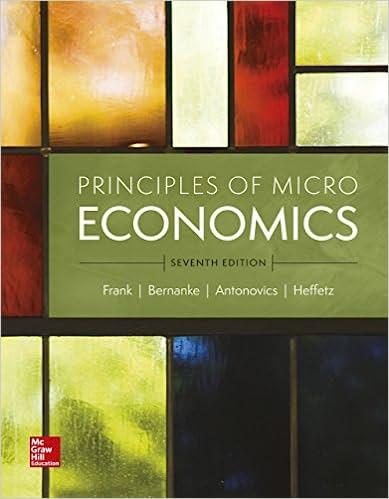Question
A region has 7 million workers. There are two cities A and B. How utility varies with population in each city is described in the
A region has 7 million workers. There are two cities A and B. How utility varies with population in each city is described in the table below.
Workers (millions) | 0.5 | 1 | 1.5 | 2 | 2.5 | 3 | 3.5 | 4 | 4.5 | 5 |
Utility ($) in City A | 80 | 94 | 105 | 115 | 120 | 115 | 108 | 100 | 90 | 75 |
Utility ($) in City B | 80 | 92 | 102 | 110 | 108 | 100 | 88 | 75 | 62 | 48 |
(a) Draw the two utility curves for cities A and B in a single diagram.
(b) In equilibrium, how many workers are in city A and how many in city B? What is the utility level?
(c) A technological innovation in city B greatly increased worker productivity and earnings in the city. This increased utility by $20 at city B for every population level. Over time, this region will reach a new equilibrium. Now how many workers are in city A and how many in city B? What is the utility level?
No need to answer part aStep by Step Solution
There are 3 Steps involved in it
Step: 1

Get Instant Access to Expert-Tailored Solutions
See step-by-step solutions with expert insights and AI powered tools for academic success
Step: 2

Step: 3

Ace Your Homework with AI
Get the answers you need in no time with our AI-driven, step-by-step assistance
Get Started


